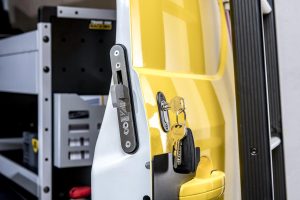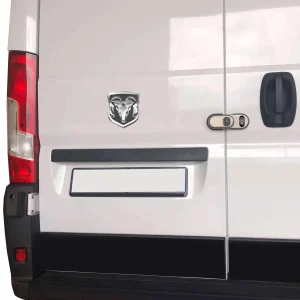A Smarter Approach to Compliance Through Industrial Safety Solutions

Compliance with safety regulations has always been a priority for industries across the globe. However, in recent years, companies have faced increasing pressure to not only meet regulatory requirements but also ensure a culture of safety that goes beyond mere compliance. In this context, Industrial Safety Solutions have become integral in adopting a smarter, more efficient approach to safety management. These solutions provide a robust framework for risk assessment, hazard control, and overall workforce protection. Among these, Environmental Risk Assessment(ERA) plays a pivotal role in ensuring both environmental and worker safety. This article will delve into how industrial safety solutions can help businesses meet and exceed compliance standards, while also promoting a safer, more responsible workplace.
The Evolving Landscape of Industrial Safety Compliance
The landscape of industrial safety compliance has shifted significantly over the years. Traditional methods of safety management, such as manual inspections and paper-based reporting, are no longer sufficient in addressing modern-day risks. Today, industries face an array of safety challenges, from managing complex machinery to dealing with the ever-increasing environmental concerns. As regulations become stricter and the demand for accountability grows, businesses must leverage industrial safety solutions to stay ahead of compliance requirements.
Industrial safety solutions use technology and data-driven approaches to streamline compliance processes. These solutions help organizations automate safety checks, maintain detailed records, and ensure that safety protocols are consistently followed. By integrating industrial safety solutions into their operations, companies can stay in compliance with safety regulations, reduce human error, and demonstrate their commitment to safety and environmental stewardship.
Environmental Risk Assessment: A Key Component of Compliance
Environmental Risk Assessment (ERA) is one of the core elements of industrial safety solutions that plays a significant role in compliance. ERA involves identifying, assessing, and managing risks that may arise from industrial activities and could negatively affect the environment or worker safety. In many industries, conducting an ERA is not just a best practice but a regulatory requirement.
The ERA process helps companies understand the potential environmental impacts of their operations, such as air pollution, water contamination, and hazardous waste. It also helps identify workplace hazards that could lead to injuries or illnesses among employees. By conducting regular ERAs, companies can implement control measures to reduce these risks and improve compliance with environmental and safety regulations.
Moreover, ERA can help businesses develop strategies to handle emergency situations, ensuring that they are prepared for unexpected environmental or safety incidents. The proactive approach offered by ERA within industrial safety solutions not only protects the environment but also safeguards the workforce and ensures that companies meet or exceed their regulatory obligations.
Integrating Industrial Safety Solutions into Daily Operations
One of the main benefits of industrial safety solutions is their ability to integrate seamlessly into daily operations. Rather than being a standalone effort, these solutions work alongside existing workflows to improve safety management and compliance. For instance, industrial safety solutions can provide real-time monitoring of equipment and environmental conditions, enabling companies to detect potential hazards before they escalate.
Additionally, industrial safety solutions offer features such as automated safety audits, regular risk assessments, and detailed reporting capabilities. This helps companies keep track of their safety performance, document compliance with regulations, and identify areas for improvement. With these solutions in place, businesses can ensure that safety is not just a set of requirements but an ongoing, dynamic process that is deeply embedded in the organization’s culture.
Improving Employee Training and Awareness Through Safety Solutions
Another area where industrial safety solutions contribute to compliance is through employee training and awareness programs. Compliance is not just about meeting regulatory standards; it’s also about ensuring that employees understand and adhere to safety protocols. Industrial safety solutions often include training modules that educate workers about potential hazards, safe operating procedures, and emergency response protocols.
By incorporating safety training directly into daily operations through digital platforms and interactive modules, industrial safety solutions make it easier for employees to stay up-to-date on compliance matters. This not only helps workers better understand safety risks but also fosters a greater sense of responsibility toward maintaining a safe work environment. As a result, companies can reduce the likelihood of accidents, improve compliance, and enhance overall workforce well-being.
The Role of Technology in Enhancing Compliance
Technology has revolutionized industrial safety solutions, making it easier for businesses to maintain compliance and enhance safety standards. One of the key technological advancements in this area is the use of sensors and IoT devices to monitor safety conditions in real time. These devices can detect hazardous gas leaks, changes in temperature, or equipment malfunctions, triggering automated responses to prevent accidents.
Moreover, data analytics play a significant role in improving compliance. By collecting and analyzing safety-related data, companies can identify trends, predict potential risks, and make informed decisions about where to allocate resources. This data-driven approach not only ensures compliance but also helps businesses take a more proactive stance in managing safety.
As industries face an increasing demand for transparency and accountability, the ability to provide real-time data on compliance efforts is essential. Industrial safety solutions equipped with technology allow businesses to demonstrate their adherence to regulations in a more efficient and accurate manner, which is crucial when dealing with audits and inspections.

Overcoming Challenges in Compliance with Industrial Safety Solutions
Despite the many advantages of industrial safety solutions, companies often face challenges when it comes to full implementation. Resistance to change, lack of training, and insufficient resources can hinder the adoption of these solutions. However, these challenges can be overcome by taking a structured approach to integration.
For instance, when introducing industrial safety solutions, businesses should prioritize educating their employees on the benefits of the new system. In addition, companies should allocate sufficient resources to ensure the smooth implementation of safety technologies and protocols. Over time, the initial investment in these solutions will yield significant returns in terms of improved compliance, reduced risk, and enhanced safety.
Future Outlook: The Ongoing Evolution of Compliance
The future of industrial safety compliance is closely tied to the continued evolution of safety technologies and regulations. As industries become more digitized and interconnected, the role of industrial safety solutions will only grow in importance. In the coming years, we can expect to see even more advanced tools for environmental monitoring, risk management, and real-time compliance tracking.
Environmental Risk Assessment (ERA) will continue to be a critical component of these solutions, helping businesses not only comply with regulations but also reduce their environmental impact. With growing emphasis on sustainability and corporate responsibility, companies will need to adopt smarter, more efficient safety practices to meet regulatory demands while protecting their workers and the environment.
Conclusion
In conclusion, industrial safety solutions offer a smarter, more efficient approach to compliance, ensuring that businesses not only meet regulatory standards but also foster a culture of safety and responsibility. Through tools like Environmental Risk Assessment (ERA), real-time monitoring, and advanced training programs, these solutions make it easier for companies to manage risks and ensure the safety of their workforce. As industries evolve, so too will the technologies and strategies used to maintain compliance, creating safer, more sustainable work environments for all.




